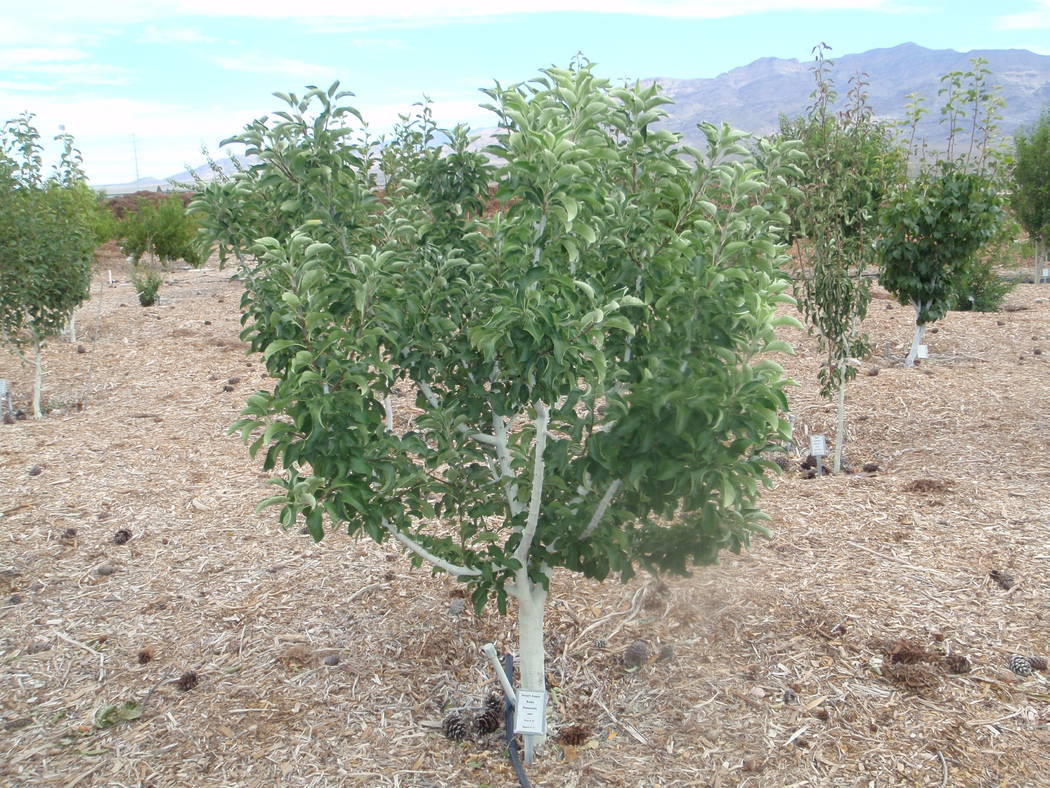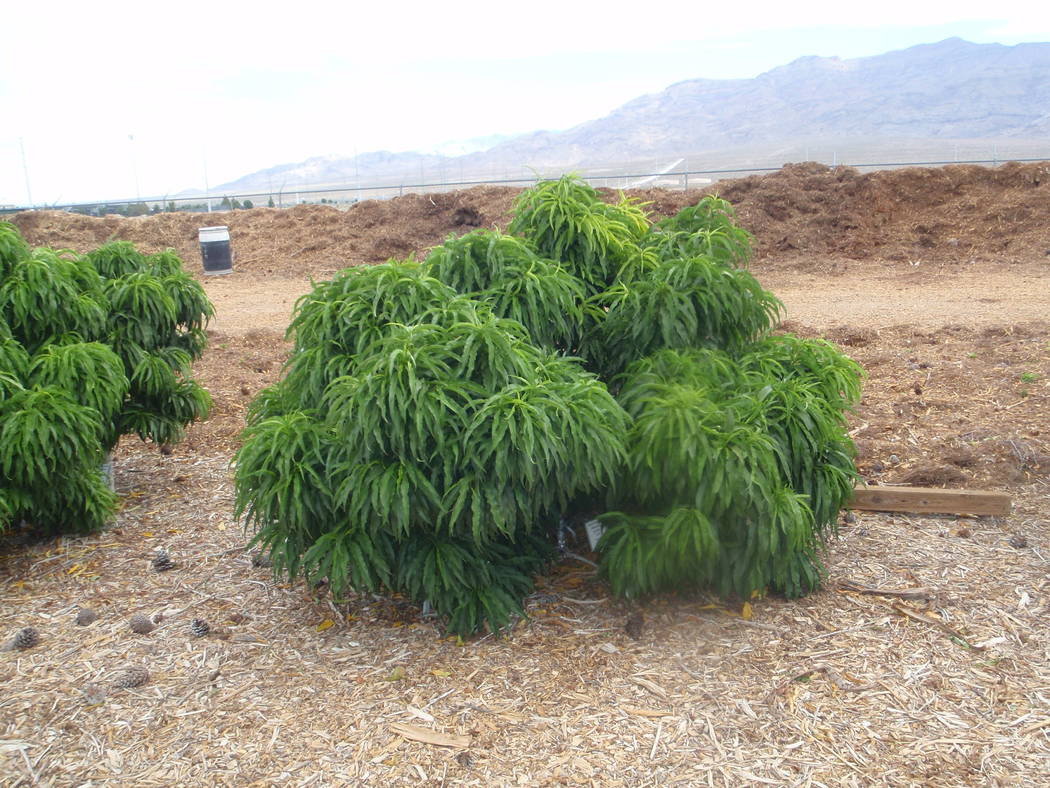Terminology sows confusion about small fruit trees


Q: I am interested in planting a fruit tree in my yard. After reading your blog, I was thinking of a fig tree, but I have been told that they can get very large. I wanted it to stay under 8 feet tall and not be difficult to grow. When should I plant it and where?
A: Fig trees will grow very large, but they can be severely cut back near the ground if needed, and they will grow again. But I don’t think you want that kind of work and maintenance. There are some smaller fig trees such as Black Jack but, generally, figs are large trees.
Fruit trees that fit your description are called miniatures or genetic dwarf fruit trees. They stay very small but produce a lot of fruit of normal size. In my opinion, fruits produced by miniature fruit trees do not taste as good as some fruit from regular fruit trees, but they are still pretty good for the casual backyard producer.
The problem is terminology, the terms used to describe these types of fruit trees. The terms thrown around in nurseries casually are “dwarf,” “semi-dwarf,” “miniature” and “genetic dwarf.” I just looked online, and these terms are confused in most, if not all, of the online fruit tree nurseries. I’m assuming they’re confused in local nurseries too.
A dwarf or semi-dwarf fruit tree can be created by grafting a dwarfing rootstock onto a normal fruit tree. This could be called a dwarf or semi-dwarf fruit tree. They will not meet your 8-foot-tall criterion in most cases. The possible exception could be apple trees.
Miniatures are sometimes the same as semi-dwarf. Miniatures are sometimes genetic dwarfs. It depends on the nursery and their definitions of these terms. Sometimes nurseries create these names for marketing purposes and, in my opinion, cause a great deal of confusion.
In most cases, you are looking for what is called a genetic dwarf. But like I said, sometimes these are called miniatures. The only real way to know is to find out their true mature size. Nurseries think that small size can be a big selling advantage.
If the term dwarf, semi-dwarf, miniature or genetic dwarf is used in its description, check its mature size. It might not be exactly what you think it is. If the mature size is not listed, don’t get sucked in by the marketing. Assume it is larger than you think.
The very small fruit trees that I refer to as miniature or genetic dwarf can be found in almond, peach, nectarine and apple and vary in height from 6 to 12 feet tall.
Q: Last January we had our yard professionally landscaped that included four rosemary bushes near a west facing block wall. The bushes were thriving, doubling in size until the middle of summer. Unfortunately, three have died, and the fourth is nearly gone. Can you offer some suggestion as to how I can stop this problem from spreading?
A: Rosemary is susceptible to root rot diseases if the soil is kept wet. This can happen if it is watered too often, planted in soil that does not drain water easily or covered in rock so it never dries out. Plant death from root rot is frequently seen during the heat of the summer. This is not a problem that should spread beyond the rosemary.
Landscapers set the irrigation clock to water frequently after planting. This can be important during the first two or three weeks while plants get established in their new location, but irrigations should be less often once the plants begin growing. They assume that someone will adjust the irrigations later and not let them run daily.
Some soils do not drain water easily. In these soils, it is best to plant on raised mounds or mounded soil so plant roots can grow into the surrounding dry soil in these raised areas. Use a similar soil to the existing one, just amend it with planting mix or compost.
It is common for landscape soils to be covered with 2 inches of rock. Because the surface is covered in rock it is called “desert landscape,” which is arguably not true.
Keep rock or any kind of surface mulch at least 6 inches from the base of the plant. Surface mulch will keep the soil from drying out and may contribute to the loss of plants if they are watered frequently.
What to do now? You will probably plant again. Don’t plant in the same holes because the soil in these holes have a buildup of disease organisms.
Plant at least 12 inches from these locations and reroute the irrigation. Water the bushes daily the first week to get them established and then begin watering less often. In this case, too much applied water is not as important as how often it is applied. Water less often but give them a generous amount when you do.
Q: I read your article in the newspaper regarding the effects on limbs from overwatering of Italian cypress. I have 15 mature cypresses along a back wall. They are about 18 years old and 30 feet in height with 7- to 9-inch diameter trunks. They are watered three to four days a week in the summer, three cycles per day and five to eight minutes per cycle. They each have three drip emitters with 10 gallons per hour. I’m afraid to change the watering cycle for fear the trees are used to more frequent watering.
A: If the trees are healthy and you are happy with their appearance, I would not change anything. Tree roots adjust to the location and number of emitters that are used. Once you begin changing this, it requires the tree to adapt to the change.
But you should be aware of several things about watering trees. First, it is best if trees are watered less often but with more water. I think a saving grace for you is that you give one day of rest, without water, between irrigations. This gives the soil a chance to drain and the roots a chance to breathe.
If soils around the roots of Italian cypress are kept constantly wet, the tree can grow very rapidly. This is good, and this is bad. If Italian cypress grows very rapidly, then the limbs can become very long and weak. Limbs might start to droop and not give the tree its characteristic rocketlike shape.
Secondly, the roots will grow near the surface of the soil because they can’t get a good mixture of air and water to grow deeper. The soil is too wet.
That might not help the tree anchor itself in the soil during strong winds. It might blow over easier. Perhaps the saving grace in all this has been a lack of applied fertilizer. I’m not sure.
Thirdly, as trees get larger, they need water applied farther and farther from the trunk. These additional drip emitters give the roots a chance to grow further from the trunk and provide better anchorage in the soil.
Perhaps there are other plants growing close enough, or even a lawn, where the Italian cypress can take on water. But having only three emitters per tree, watering trees of this size, does not spread the water out far enough to give them strong support to keep them upright in strong winds.
Q: I have houseflies all over my lantana and roses. I find little black dots, which I guess to be eggs, on the leaves of those plants. I have sprayed with neem oil and Ortho Home Defense to get rid of them, but they keep coming. I don’t see damage to the plants, but I don’t want to have a fly breeding grounds in my garden.
A: Sounds like these flies are using your lantana and roses as a bordello. I don’t think the black spots are eggs. I think it is insect poop. Their poop from the sound of it.
The simple explanation is that they are probably attracted to something to eat nearby such as dog food, animal poop, garbage cans, etc. Find the source of their food, control it and the flies will move on. That’s the only way I know to achieve long-lasting, sustainable control. If you relied on sprays or traps it would be a never-ending battle.
Bob Morris is a horticulture expert and professor emeritus of the University of Nevada, Las Vegas. Visit his blog at xtremehorticulture.blogspot.com. Send questions to Extremehort@aol.com.













